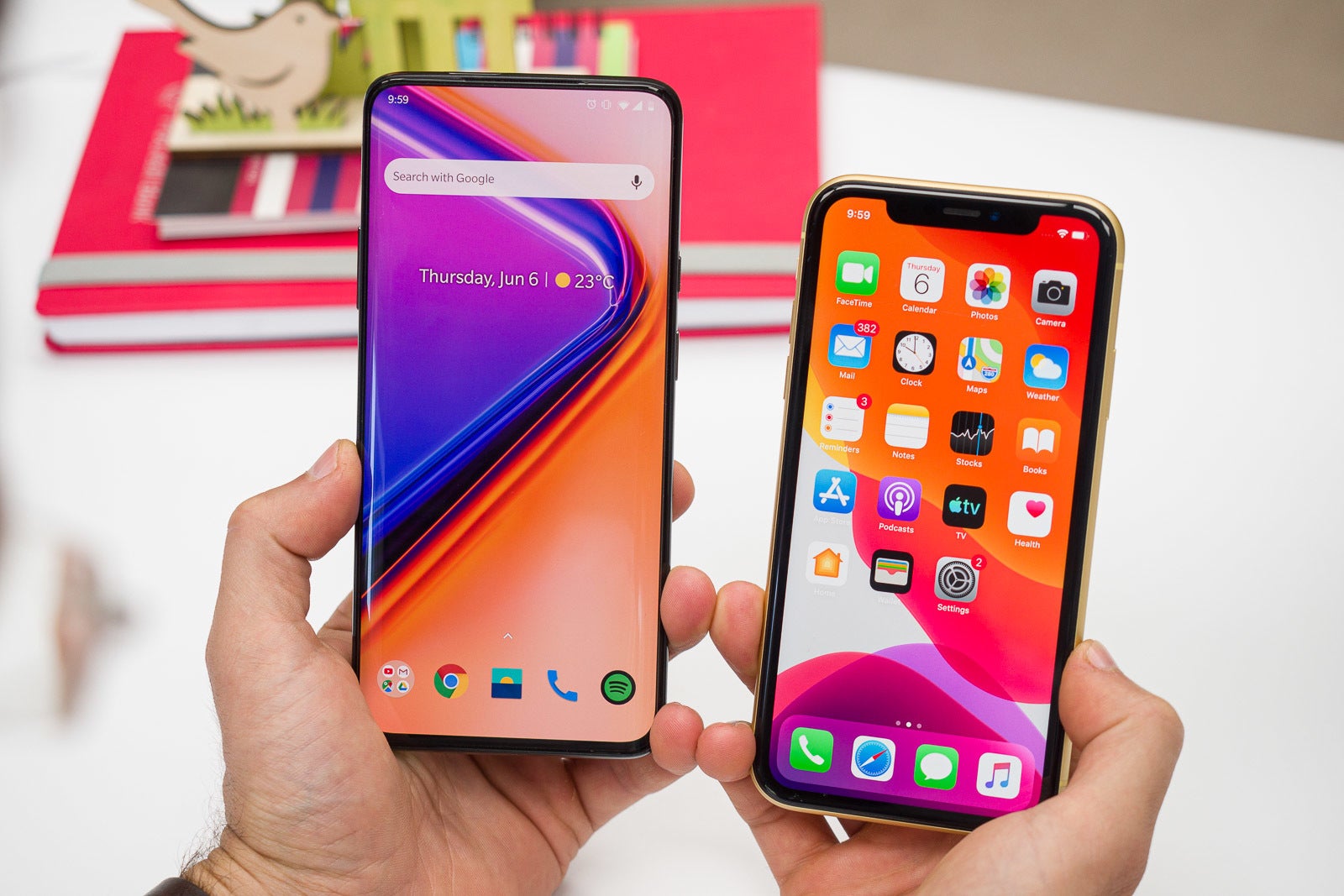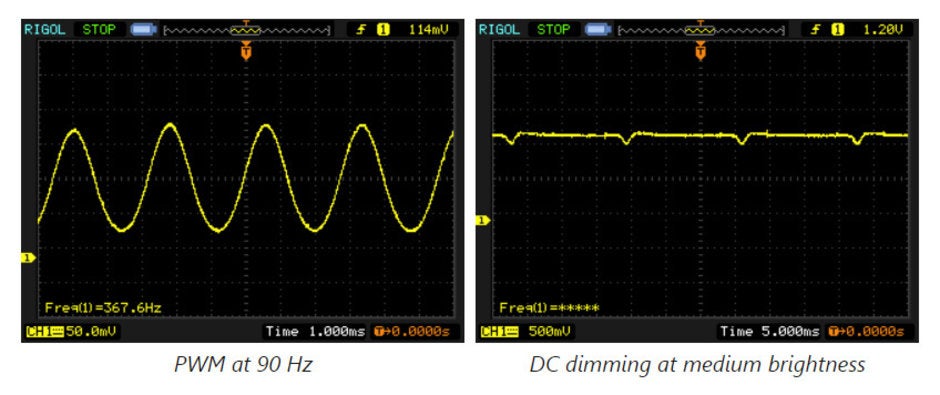Is the OnePlus 7 Pro display hurting your eyes? You're not the only one (but there is a fix!)

I have been using the OnePlus 7 Pro in the past month or so, and overall I am extremely impressed: first and foremost, this phone is faster than any other phone that I have used so far, secondly, after the recent update, the camera now takes true flagship-grade photos, third, battery life is solid and overall, this phone is... just kind of perfect. Well, except for one thing: I use my phone a lot at night, with the lights off. I have been doing this with all phones, it's a habit really: I usually watch about a half an hour of YouTube videos to lull myself to sleep, but I have noticed that while doing this my eyes get tired extremely easily on the OnePlus 7 Pro and after a short while they start hurting. I have never experienced something quite like that before, so... it was time to do some research: is it just me imagining things or is this a real problem for users?
And after a good amount of research, I think I have found the issue. And thanks to my co-worker Preslav, I have found a fix too.
How screen brightness works

OnePlus 7 Pro with its AMOLED screen on the left, iPhone XR with an LCD screen on the right
The first step on my quest to understanding why the OnePlus 7 Pro display was hurting my eyes was to get a more detailed understanding of how screens actually work. I usually spend my days in front of a big monitor at work and that usually means at least 8 hours staring at that thing, and my eyes did not get quite as sore as a half an hour of my night viewing on the OnePlus 7 Pro. So... could it have been the type of display made a difference?
OnePlus 7 Pro screen flickers at a different rate than most other phones and that may irritate your eyes at night. Thankfully, there is an easy fix.
Most stand-alone monitors use the good old LCD technology with a backlight that can be turned up and down to adjust the brightness. It's technology that has been around for quite a while, and up until recently most smartphones also used LCD displays.
But as you probably know, modern flagship phones use a different technology: that newer technology is called OLED, or AMOLED, and there is no backlight there, but instead every single pixel lights up individually.
The fascinating science of screen brightness
Those differences are important, but before we explore them, we should take a diversion to find out how screen brightness actually works.
Here is the thing: LED lights do not really have a dimmer switch. They are binary: you can have them on or you can have them off. So to change the brightness, engineers perform a clever trick, they keep the lights off for a fraction of a second and then quickly turn them back on. This type of switching between an on and off stage happens hundreds or thousands of times and it is usually perceived by the human eye as a dimmed screen. Let's repeat this one more time: the screen on your phone constantly flickers to reproduce a lower brightness, it does not just stay set at one fixed brightness level. For example, if you want to get 50% screen brightness, the display would simply need to keep the digital signal on for 50% of the time and off for the remaining 50%. This is something that is scientifically called pulse-width modulation, or PWM for short, and it's done extremely rapidly. The frequency of those changes is measured in Hertz (Hz), or simply put this is the number the change occurs per second.
Now, let's go back to our good LCD vs AMOLED technology battle. On LCD screens, this flickering happened thousands of times and was essentially impossible to spot by the human eye. With most AMOLED displays, however, the screen flickers far less often. Usually, on most AMOLED screens, screen brightness change is used with that exact method and the flicker happens at a rate of about 240 times per second, or 240 Hertz. When the screen flickers just 240 times per second, this is enough for the pupil to expand and shrink to adjust to those split-second changes. More sensitive users will be able to pick this up: people still don't notice the flicker, but the eyes get tired for seemingly no apparent reason.
Now, let's go back to the OnePlus 7 Pro. Tech blog Notebookcheck measured that the OnePlus 7 Pro screen is significantly worse than most other AMOLED screens when it comes to pulse-width modulation. At a PWM rate of 120 Hertz, the OnePlus 7 Pro screen flickers twice as slow further straining your eyes and making your pupil work really hard. And this is especially true if you use your phone at a low brightness level (which usually happens at night when I experience those issues).
This is not something that will affect every single person out there, but it is definitely something that those who are sensitive will notice in a very bad way.
Here is how to fix this
So... should we just stop recommending the OnePlus 7 Pro to those who have sensitivities to display issues like that?
Thankfully, not.
OnePlus is obviously aware that this could have been a problem for users and it has implemented a clever new feature that gets away of the traditional pulse-width modulation way to change screen brightness and instead changes the circuit power of the screen to adjust the brightness. This way, screen flickers at low brightness are significantly reduced and you can use the screen without your eyes getting tired so easily.

OnePlus warns that enabling this feature "may lead to abnormal colors being displayed in some cases", but that seems like a small trade-off when you have to pick between eyes not hurting or slight issues with color balance.
So how do you enable this option?
Simply go into settings and type in OnePlus Laboratory, where you will find only one option: DC dimming. Activate it and enjoy using your OnePlus at low brightness without burning your eyes.
Finally, it's worth saying that all of the aforementioned issues with the OnePlus will probably affect users most when viewing content running at 60 Hertz (things like YouTube videos for example). When the OnePlus 7 Pro is running at the default 90 Hertz in places like the interface the PWM rate is set at 367.6 Hz, which is faster and will not affect that many users. In either case, if you find your eyes hurting more when you are using the OnePlus 7 Pro, make sure you try enabling the DC dimming option, a true godsend for those cases.
Follow us on Google News














Things that are NOT allowed:
To help keep our community safe and free from spam, we apply temporary limits to newly created accounts: